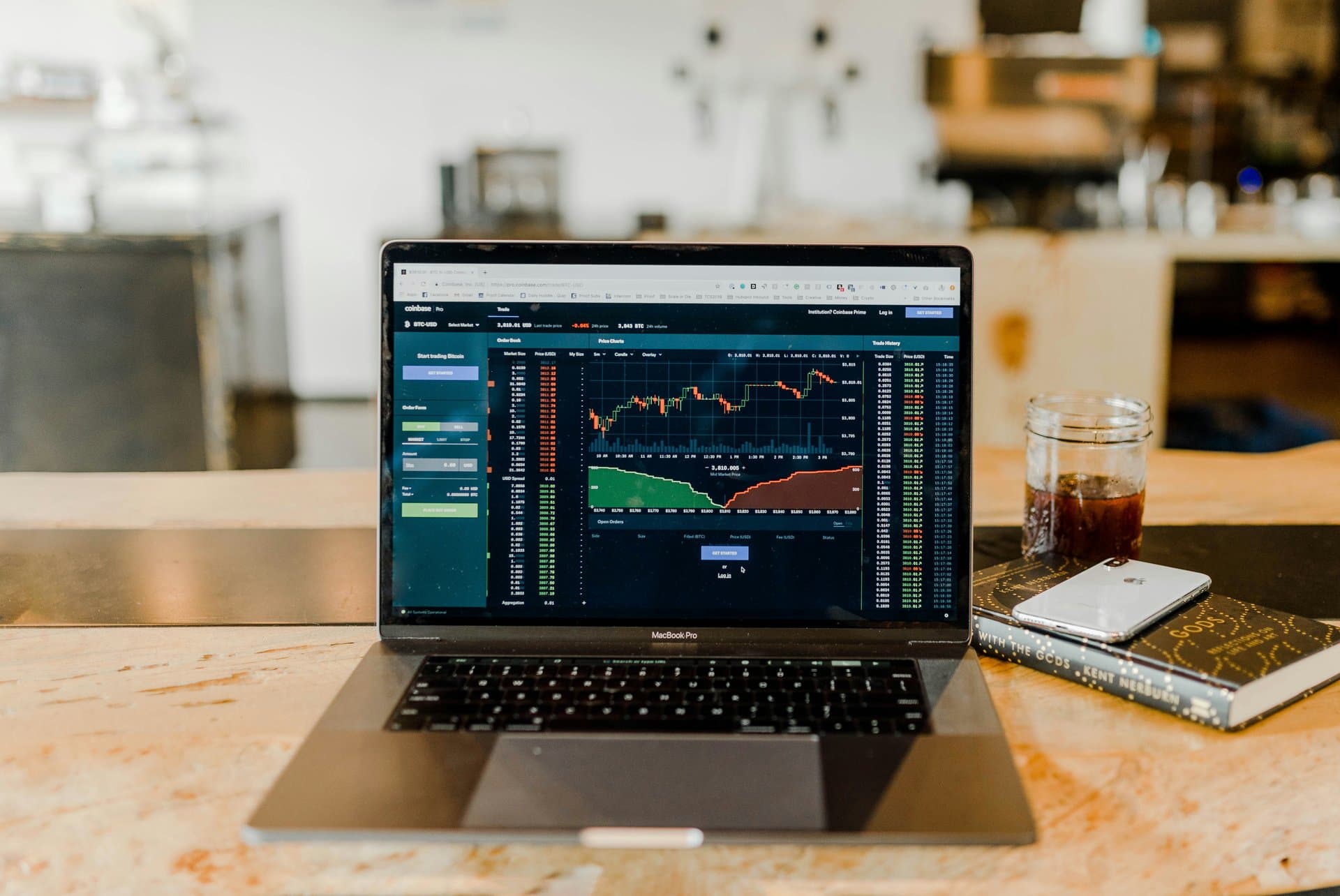Mastering Market Moves: Inflation and Earnings Insights This Week
Explore how the latest US inflation data and tech earnings shape market dynamics, influencing Federal Reserve decisions and investor sentiment in this pivotal week for financial watchers.

Key Takeaways
- US inflation is steady but uneven across sectors
- July’s CPI release will influence Fed’s rate decisions
- Tech earnings reveal AI and crypto industry trends
- Stablecoin Circle surges amid new US legislation
- Global economic data adds layers to market sentiment

This week, the financial world holds its breath as fresh US inflation figures and corporate earnings reports take center stage. After a surprising jobs report last week hinted at possible Federal Reserve rate cuts sooner than expected, eyes now turn to the July Consumer Price Index (CPI) release. Inflation, that ever-present market specter, shows signs of stabilizing but with stubborn pockets of price pressure in shelter, medical care, and insurance. Meanwhile, tech giants like Cisco and CoreWeave prepare to unveil earnings that will shed light on AI infrastructure spending and cryptocurrency developments. The stablecoin issuer Circle, riding a wave of regulatory clarity from the new GENIUS Act, has seen its shares soar over 400% since its IPO. Beyond the US, global economic data from the UK, eurozone, and China add complexity to the market’s mood. This article unpacks these key events, debunks common inflation myths, and offers a fresh lens on what investors should watch this week.
Decoding Inflation Trends
Inflation isn’t just a number on a report; it’s the silent force shaping your grocery bill, rent, and even your mood. July’s Consumer Price Index (CPI) release, scheduled for Tuesday, August 12, 2025, promises to be a market mover. Recent data shows annual CPI inflation at 2.7% for June, with core CPI — which excludes the volatile food and energy sectors — nudging up to 2.9%. The monthly increases were modest, just 0.1% for both headline and core CPI, suggesting inflation is steady but not vanishing. Yet, the devil’s in the details: shelter costs rose 3.8%, medical care 2.8%, and motor vehicle insurance a striking 6.1%, all outpacing the headline inflation rate. Energy prices, meanwhile, continue their downward slide, offering some relief. The Cleveland Fed’s nowcasting estimates for August put headline CPI at 2.86% and core CPI at 3.02%, reinforcing the narrative of moderate but persistent inflation. The New York Fed’s consumer expectations show a slight uptick in inflation forecasts, with one-year outlooks rising to 3.1%. This nuanced picture challenges the myth that inflation is either out of control or fully tamed — it’s a patchwork, with some sectors still feeling the heat while others cool off. Understanding these trends is key to anticipating how the Federal Reserve will act and how your wallet feels the pinch.
Interpreting Federal Reserve Signals
Last week’s shift in Federal Reserve commentary caught many off guard. After a weak jobs report, several Fed officials hinted that interest rate cuts might arrive sooner than the market expected. Richmond Fed President Tom Barkin, Chicago Fed President Austan Goolsbee, and Atlanta Fed President Raphael Bostic are set to share more insights this week, potentially clarifying the central bank’s stance ahead of the September meeting. The Fed’s watchful eye on inflation data, especially the upcoming July CPI, will shape their decisions. While headline and core inflation hover near the Fed’s 2% target, the persistence of price pressures in key sectors keeps the debate alive. The myth that the Fed only reacts to headline inflation is busted here — they scrutinize core inflation and consumer expectations too. The possibility of rate cuts this year signals a nuanced approach: balancing the risks of overheating against the need to support economic growth. For investors and consumers alike, these signals are more than policy talk; they influence borrowing costs, mortgage rates, and ultimately, spending power. Staying tuned to Fed remarks this week is like reading the market’s tea leaves for the months ahead.
Unpacking Tech Earnings Impact
Earnings season is the financial world’s reality check, and this week’s tech reports promise to be especially revealing. Cisco Systems, a networking giant, is set to report Wednesday after a strong previous quarter fueled by rising AI infrastructure demand. Their results will offer clues about how businesses are investing in cutting-edge technology despite inflationary headwinds. Similarly, CoreWeave, a cloud computing firm partnered with Nvidia, will unveil second-quarter earnings amid a recent $6 billion investment in a Pennsylvania data center. This move signals confidence in AI’s growth trajectory and the infrastructure needed to support it. The cryptocurrency sector also grabs attention with stablecoin issuer Circle reporting Tuesday. Circle’s shares have soared over 400% since its early June IPO, buoyed by the GENIUS Act passed in July, which provides clearer regulatory frameworks for stablecoins. These earnings reports bust the myth that inflation uniformly stifles innovation; instead, they reveal pockets of robust investment and growth. For investors, these results will illuminate which tech subsectors are weathering inflation and which might stumble, guiding portfolio shifts and sector bets.
Evaluating Global Economic Signals
While US inflation and earnings dominate headlines, global economic data adds crucial context. This week features GDP releases from the UK and eurozone, alongside updates on July economic activity from the US and China. These figures will influence global risk sentiment, especially if they diverge from forecasts. For example, stronger-than-expected growth abroad could offset US inflation concerns, while weaker data might amplify market jitters. The interplay between these economies challenges the myth that US markets operate in isolation. Instead, investors must navigate a complex web where tariffs, commodity prices, and geopolitical shifts ripple across borders. The upcoming wholesale inflation data and consumer sentiment surveys in the US will further color this picture, revealing how price pressures translate into public confidence. Understanding these global signals helps investors anticipate sector rotations and currency moves, essential for those steering diversified portfolios in an interconnected world.
Navigating Market Sentiment Shifts
Market sentiment is the invisible hand guiding investor behavior, and this week it’s poised for a shake-up. The anticipated July CPI release, combined with corporate earnings and global data, sets the stage for potential volatility. Recent surveys show US consumers growing more confident about their finances and less worried about unemployment, even as inflation expectations tick slightly higher. This optimism contrasts with the cautious stance of some Fed officials, reflecting the delicate balance between hope and reality. The myth that markets only react to numbers is debunked here — sentiment often drives sharp moves before data fully settles. Sector rotations may accelerate if earnings reveal uneven impacts of inflation, with consumer discretionary and transportation sectors under particular scrutiny. For investors, this means staying alert to shifts in mood as much as metrics. The week ahead is a reminder that markets are as much about psychology as statistics, and savvy watchers will read both to navigate the twists.
Long Story Short
As the week unfolds, the dance between inflation data and corporate earnings will choreograph market moves with precision. The July CPI figures, expected to confirm a moderate inflation pace, will be a crucial signal for the Federal Reserve’s September meeting, where some officials are already leaning toward rate cuts. Tech earnings from Cisco, CoreWeave, and others will provide a real-world pulse on how inflation and innovation intersect, especially in AI and crypto sectors. Circle’s remarkable stock surge underscores how legislation can reshape market narratives overnight. Yet, the uneven inflation pressures remind us that the story isn’t uniform — shelter and insurance costs still bite hard. Investors should brace for volatility, sector rotations, and shifts in consumer sentiment as fresh data lands. The relief of a funded emergency account and the clarity of informed positioning will be the antidotes to market uncertainty. This week is a masterclass in how data, policy, and corporate realities weave together — a must-watch for anyone steering their financial future.